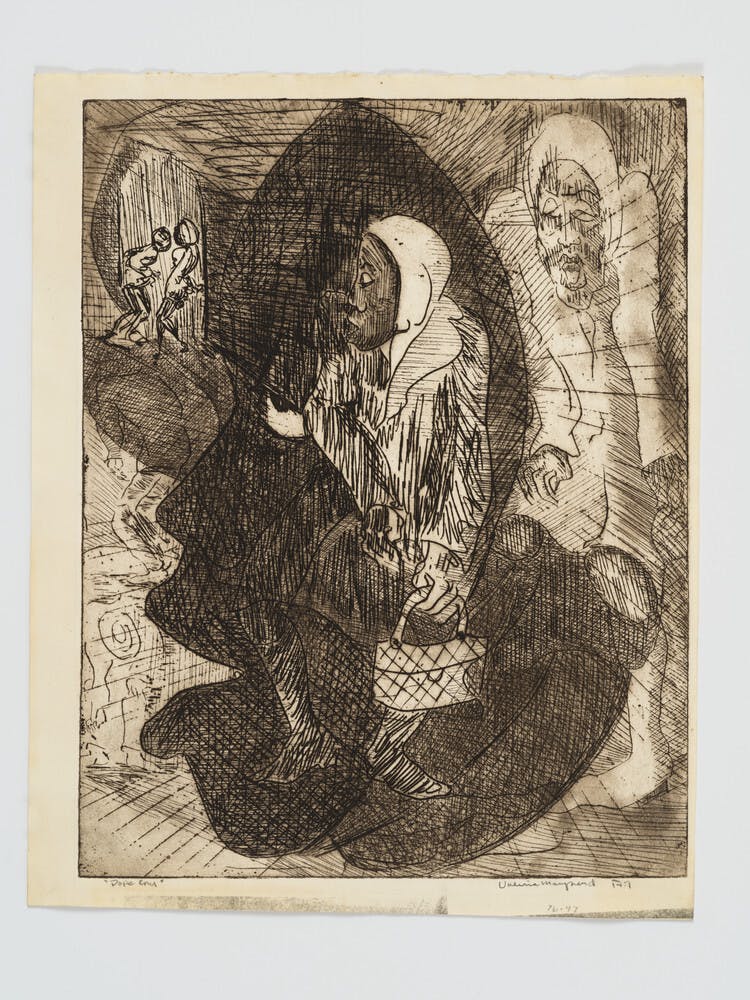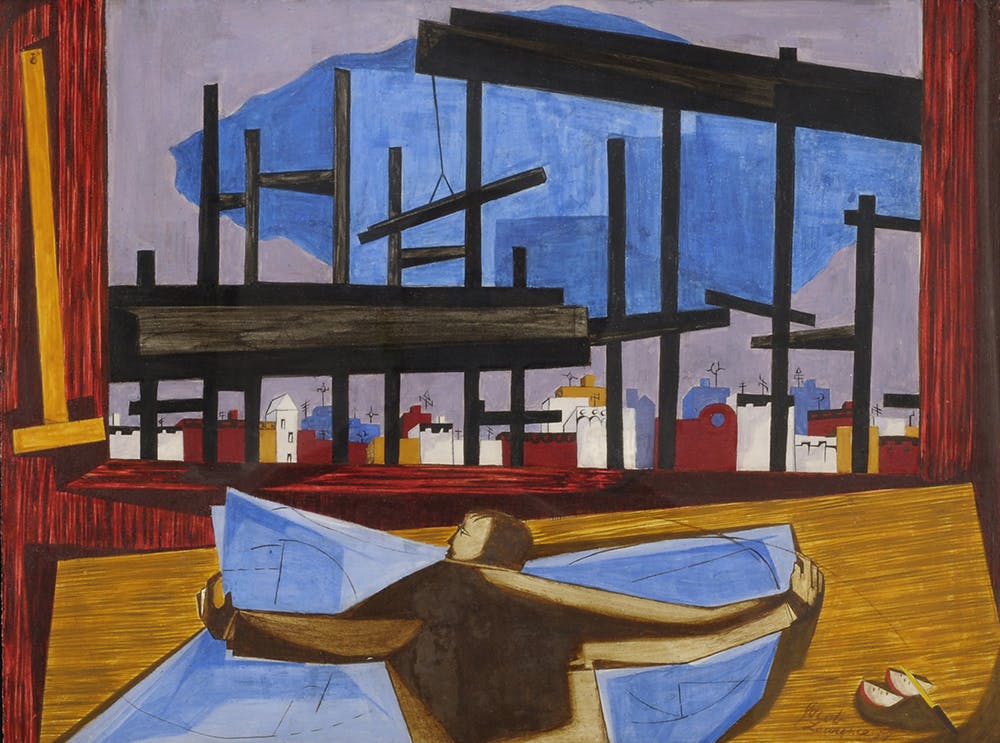Valerie Maynard
(1937–2022)1969–1974 Artist in ResidenceA critical figure of the Black Arts Movement of the 1960s and 1970s and fierce advocate of the arts, Valerie Maynard investigates the intersections of racial, political, and gender-specific forces.
Biography
In her prints, sculptures, and public art installations, Valerie Maynard’s keen social commentary reflects her lifelong commitment to critically observing, engaging with, and working to improve the world in which she lived.
She grew up on West 142nd Street in the later years of the Harlem Renaissance. Audre Lorde lived next door to her family, with James Baldwin—with whom Maynard struck up an influential friendship—also living nearby. She was surrounded by vibrant cultural and political figures passing through the neighborhood, such as jazz musician Charlie Parker and aspiring congressman Adam Clayton Powell, Jr. As a teenager, she took art classes at the Museum of Modern Art on the weekends and frequented the city’s libraries, in particular the Schomburg Center for Research in Black Culture. Through classes at the New School for Social Research and the MA program at Goddard College, she followed her instincts in the development of her artistic practice, preferring, for instance, to use hand tools rather than electric ones to create her carved works.
Following the completion of her MA, Maynard returned to New York. From 1969 to 1974, she was an artist in residence at the Studio Museum in Harlem. She ran the printmaking workshop in the institution’s loft; this program was established shortly after the Museum’s founding by then-director Edward S. Spriggs. The workshop connected the Museum directly to Harlem schools and community members—a commitment that undergirded Maynard’s practice and informed the Afrocentric linocuts she made during this period. For the remainder of her career, her sculptures and prints delineated the nuances of the Black experience across the globe, addressing topics such as South African apartheid and the civil rights movement. Maynard also completed numerous public art commissions, including at a New York subway stop, Ramsey Park in Boston, and Baltimore City College. She passed away in 2022.
Maynard studied at the Museum of Modern Art and the New School for Social Research, and earned her MA from Goddard College. Throughout her life, she was a committed educator, teaching at Howard University, the University of the Virgin Islands, and the Baltimore School for the Arts. The Studio Museum has presented her work in Valerie Maynard and James McCoy (1970); Impressions/Expressions: Black American Graphics (1979); and Their Own Harlems (2017).
Exhibitions and Events
Valerie Maynard
(1937–2022)1969–1974 Artist in ResidenceA critical figure of the Black Arts Movement of the 1960s and 1970s and fierce advocate of the arts, Valerie Maynard investigates the intersections of racial, political, and gender-specific forces.
Dope Cry, 1976
Biography
In her prints, sculptures, and public art installations, Valerie Maynard’s keen social commentary reflects her lifelong commitment to critically observing, engaging with, and working to improve the world in which she lived.
She grew up on West 142nd Street in the later years of the Harlem Renaissance. Audre Lorde lived next door to her family, with James Baldwin—with whom Maynard struck up an influential friendship—also living nearby. She was surrounded by vibrant cultural and political figures passing through the neighborhood, such as jazz musician Charlie Parker and aspiring congressman Adam Clayton Powell, Jr. As a teenager, she took art classes at the Museum of Modern Art on the weekends and frequented the city’s libraries, in particular the Schomburg Center for Research in Black Culture. Through classes at the New School for Social Research and the MA program at Goddard College, she followed her instincts in the development of her artistic practice, preferring, for instance, to use hand tools rather than electric ones to create her carved works.
Following the completion of her MA, Maynard returned to New York. From 1969 to 1974, she was an artist in residence at the Studio Museum in Harlem. She ran the printmaking workshop in the institution’s loft; this program was established shortly after the Museum’s founding by then-director Edward S. Spriggs. The workshop connected the Museum directly to Harlem schools and community members—a commitment that undergirded Maynard’s practice and informed the Afrocentric linocuts she made during this period. For the remainder of her career, her sculptures and prints delineated the nuances of the Black experience across the globe, addressing topics such as South African apartheid and the civil rights movement. Maynard also completed numerous public art commissions, including at a New York subway stop, Ramsey Park in Boston, and Baltimore City College. She passed away in 2022.
Maynard studied at the Museum of Modern Art and the New School for Social Research, and earned her MA from Goddard College. Throughout her life, she was a committed educator, teaching at Howard University, the University of the Virgin Islands, and the Baltimore School for the Arts. The Studio Museum has presented her work in Valerie Maynard and James McCoy (1970); Impressions/Expressions: Black American Graphics (1979); and Their Own Harlems (2017).




